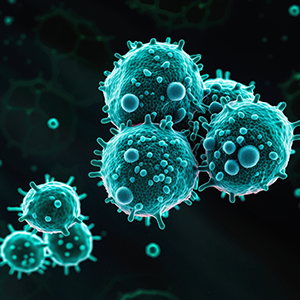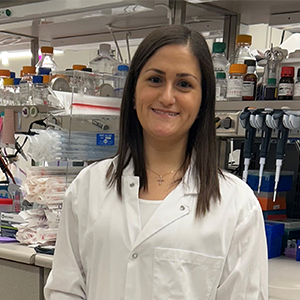-
Science Saturday: Mayo researchers study the genetic basis of high cholesterol in adults

In a new study published in NPJ Genomic Medicine, Mayo Clinic researchers found that genetic testing may help identify patients with high cholesterol, or hypercholesterolemia. It also may have implications for the clinical management of patients diagnosed with high cholesterol due to a genetic disorder, or familial hypercholesterolemia.
"In our study, we found more than 50% of the people with disease-causing variants did not meet the clinical criteria for familial hypercholesterolemia," says Iftikhar Kullo, M.D, a Mayo Clinic cardiologist. "Increased genetic testing and population-scale genomics may help to identify patients in this category who otherwise would go undetected." Dr. Kullo is the senior author of the study.
Hypercholesterolemia is a disease that affects how the body processes cholesterol, the waxy substance found in the blood. It is a significant risk factor for atherosclerotic cardiovascular disease. Nearly 95 million U.S. adults have an elevated cholesterol level, with only half on a lipid-lowering treatment. Both genetic and lifestyle factors are known to predispose a person to hypercholesterolemia.
Prior studies attempted to uncover the genetic basis of hypercholesterolemia included people clinically diagnosed or referred to lipid clinics due to their raised or abnormal levels of blood fats. The reported prevalence of a single gene (monogenic) or two or more genes (polygenic) causes of the disease was high in these cohorts.
Dr. Kullo says these estimates were affected by the referral bias inherent in these groups, the inclusion of people with secondary forms of the disease, and the variable application of guidelines to find disease-causing variants in familial hypercholesterolemia genes.
"Our goal was to address these limitations by studying a cohort of people from the community who did not have a secondary cause of hypercholesterolemia and use an established framework to identify the disease-causing variants," says Dr. Kullo.
Researchers studied 1,682 people from Southeast Minnesota with primary hypercholesterolemia, including those with familial hypercholesterolemia. Genetic testing was performed to identify a monogenic cause, defined as presence of a disease-causing or likely disease-causing variant. A polygenic risk score for low-density lipoprotein cholesterol was estimated, and a score greater than 90% was used to define a polygenic cause.
Researchers found a genetic cause of hypercholesterolemia ― either monogenic or polygenic ― was present in 17% of the people studied. There was poor overlap between the presence of a genetic cause and clinically diagnosed familial hypercholesterolemia.
For people who met the clinical criteria for familial hypercholesterolemia, only 26% had an identifiable genetic cause and only 12% had an identifiable genetic cause that met the criteria for familial hypercholesterolemia.
Dr. Kullo says the results suggest that genetic testing could help detect familial hypercholesterolemia cases for those patients who would otherwise go undetected. They also bring to light the differences in the definitions of familial hypercholesterolemia.
"To better manage care for patients, continued research is needed to identify new genetic causes for hypercholesterolemia," says Dr. Kullo.
Funding
This study was funded as part of the National Human Genome Research Institute-supported Electronic Medical Records and Genomics Network (U01HG006379) and Mayo Clinic's Center for Individualized Medicine. The Mayo Clinic Biobank is funded by Mayo Clinic's Center for Individualized Medicine. Dr. Kullo is also funded by National Heart, Lung, and Blood Institute grant K24-HL137010. The content is solely the authors' responsibility and does not necessarily represent the official views of the National Institutes of Health.
Learn more
Read more stories about advances in individualized medicine.
Register to get weekly updates from the Mayo Clinic Center for Individualized Medicine blog.
Join the conversation
For more information on the Mayo Clinic Center for Individualized Medicine, or visit Twitter at @MayoClinicCIM.

Related Articles








